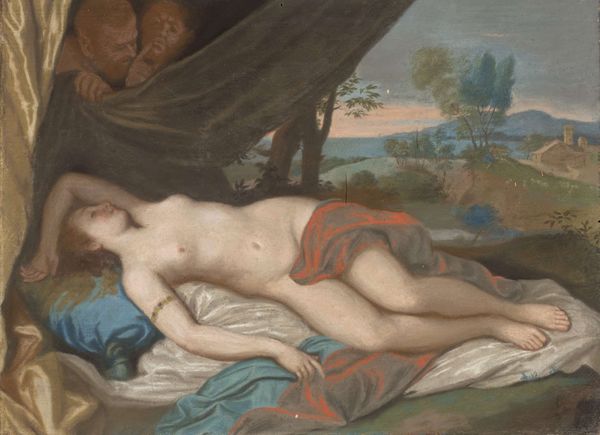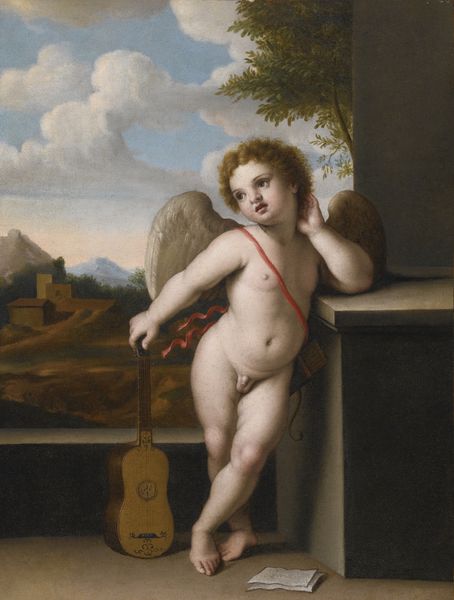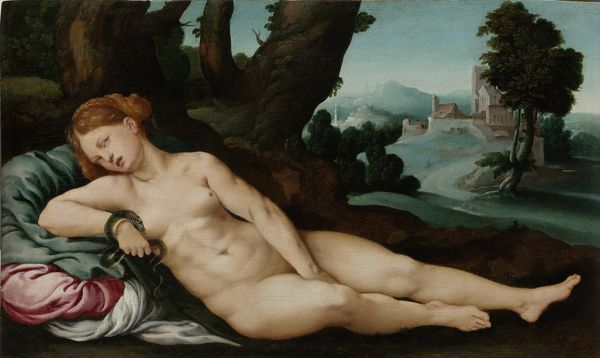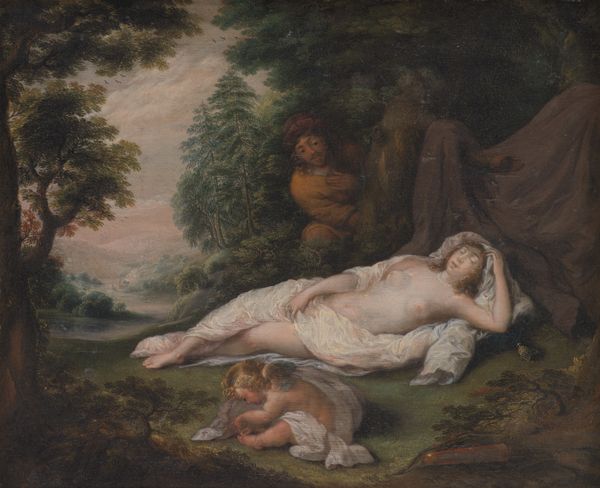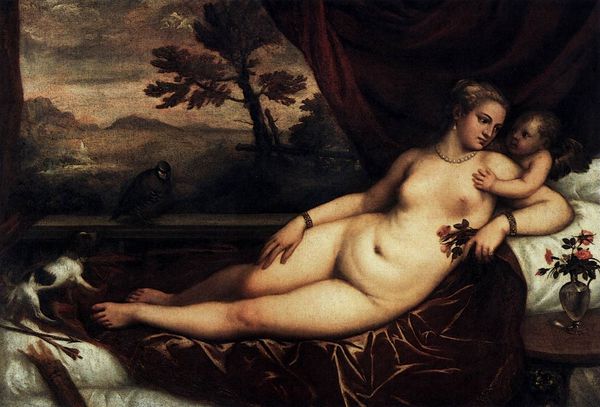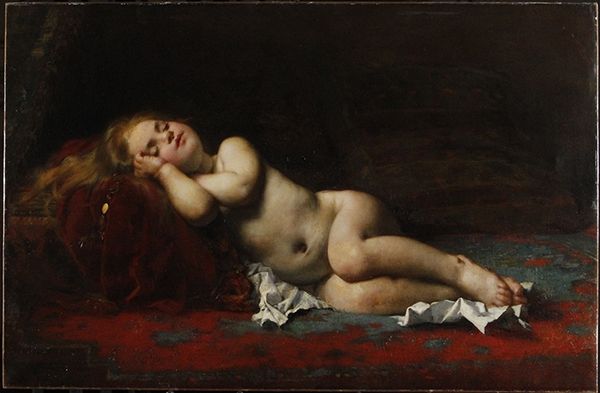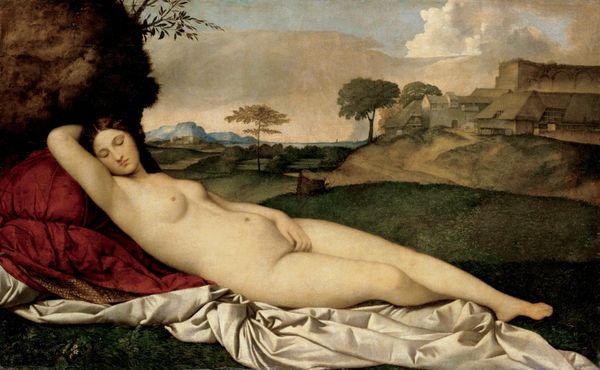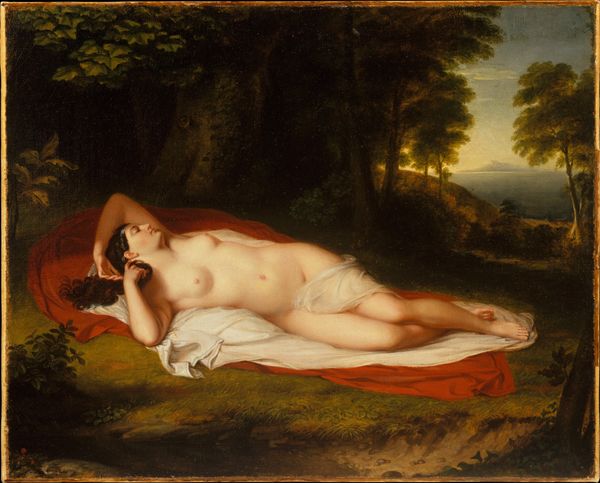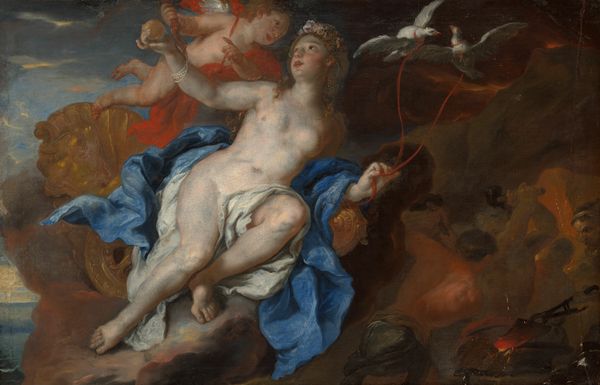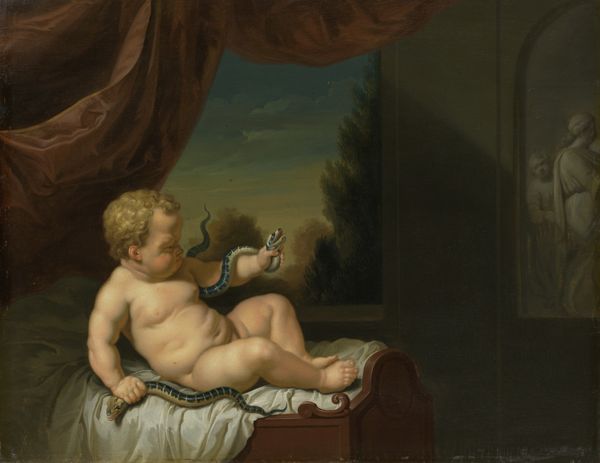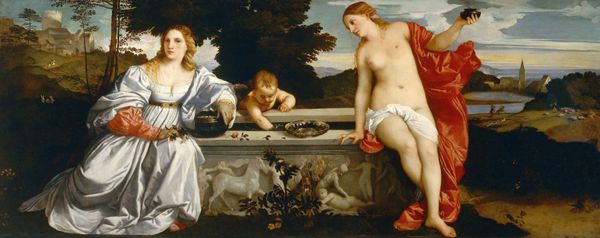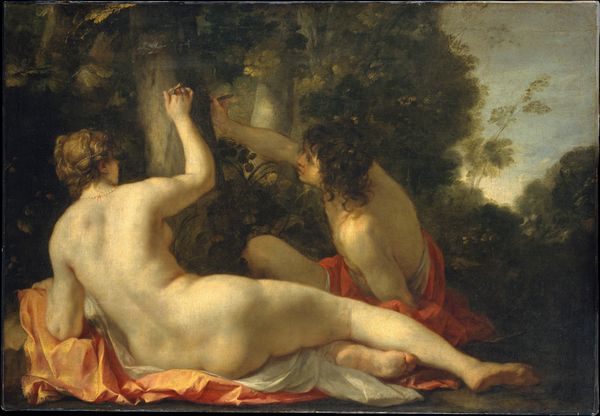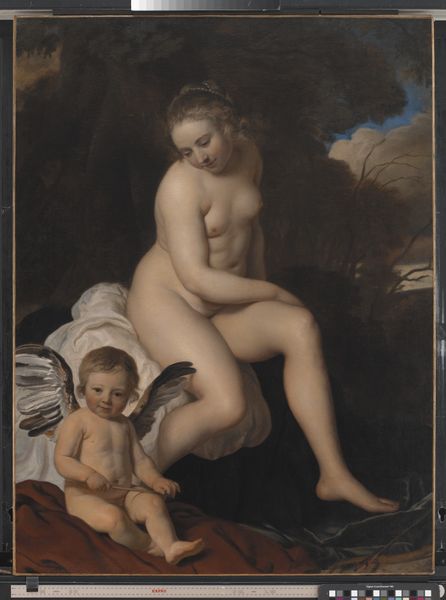
oil-paint
#
portrait
#
baroque
#
oil-paint
#
figuration
#
oil painting
#
christianity
#
history-painting
#
italian-renaissance
#
nude
#
christ
Dimensions: 76 x 64.5 cm
Copyright: Public domain
Editor: This is “Baby Jesus asleep on the Cross” painted by Guido Reni around 1625. The oil-paint medium gives it a soft, almost dreamlike quality. It’s unsettling to see this peaceful baby juxtaposed with such stark symbols of the Passion. What strikes you most about this piece? Curator: The painting's power lies in its blatant visual and conceptual juxtapositions. We see an idealized, chubby, almost aggressively ‘white’ cherubic baby – completely vulnerable – placed directly on the instrument of torture that anticipates his destiny, framed within an Italianate landscape that can signify a range of cultural norms, values and oppressions tied to faith, empire, patriarchy. Reni is forcing a confrontation. He dares the viewer to ignore the violent theological, social and political underpinnings of this image. Where do you see that violence manifested most clearly? Editor: I think the crown of thorns at the foot of the cross drives that point home. The implied suffering seems inescapable, even in infancy. But is it simply an allusion to future pain? Curator: Exactly. Think about the implications. What does it say about faith, about divine will, to present the future Messiah this way? It forces us to grapple with theodicy. Consider, too, the tradition of the "Ecce Homo," where Jesus's suffering is put on display; Reni almost preemptively collapses birth, innocence, and the horrific future into a single, emotionally loaded image. Who benefits from depicting this scene and reinforcing these ideas? Editor: It definitely shifts my perspective, seeing it less as a sentimental image and more as a challenge. I thought I was just looking at a baby, but it is about a range of other loaded cultural factors, as you say, relating to suffering, innocence and, power. Thanks for highlighting those aspects! Curator: My pleasure! I am glad to encourage you in moving from image appreciation to image interrogation.
Comments
No comments
Be the first to comment and join the conversation on the ultimate creative platform.
